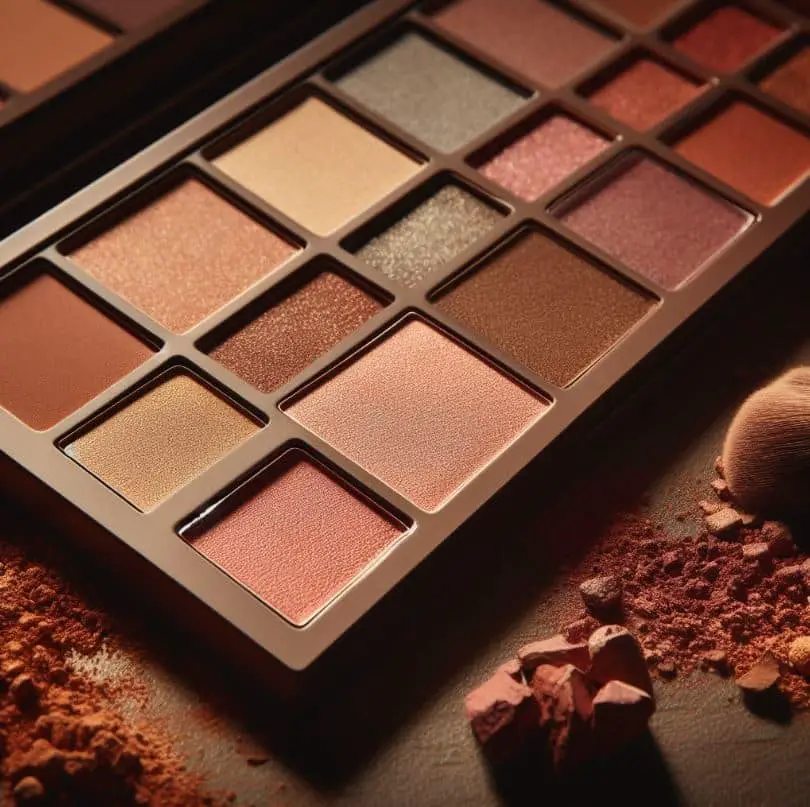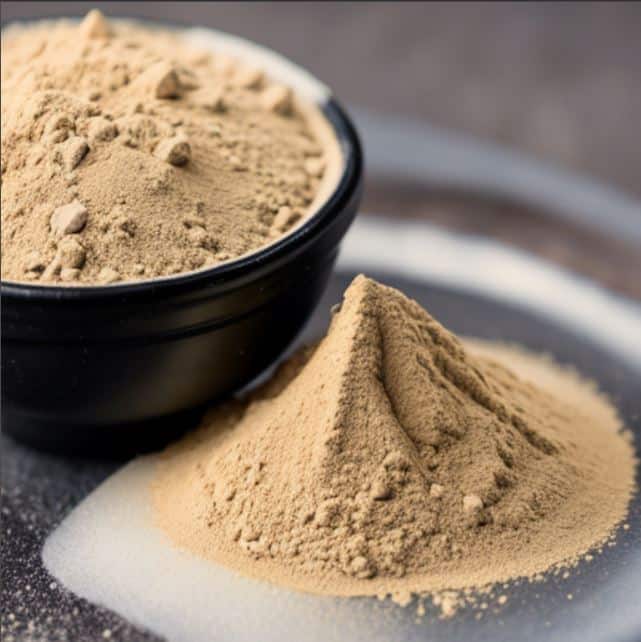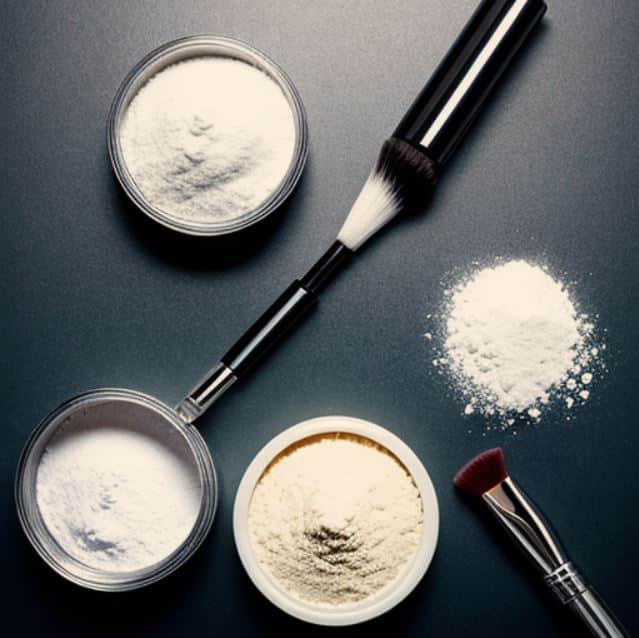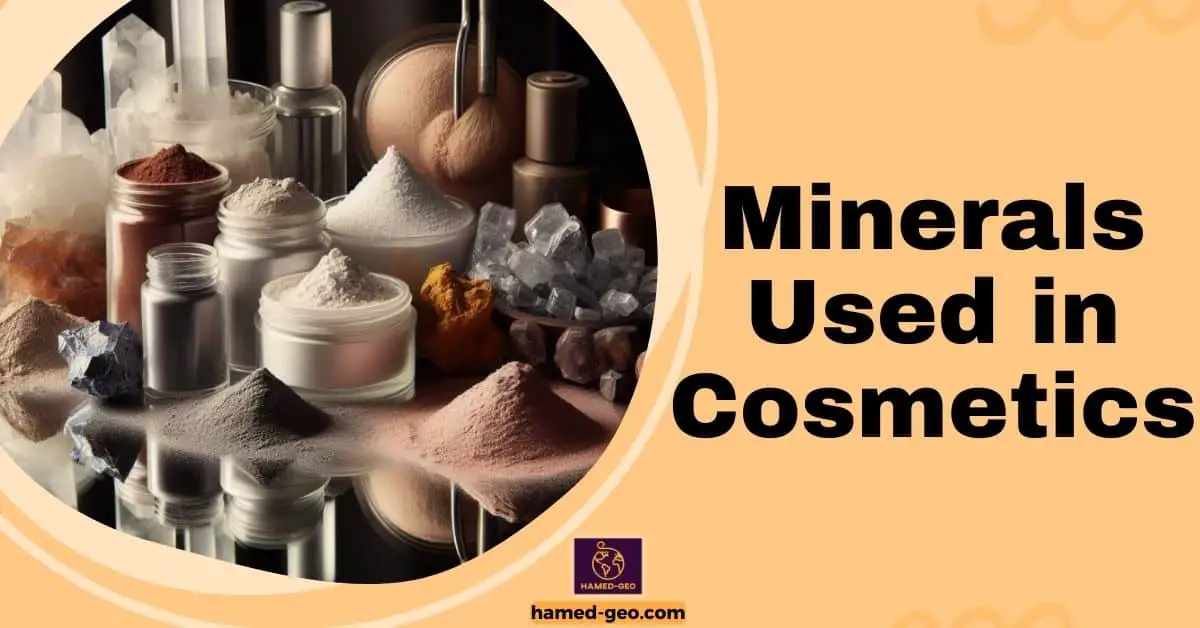Minerals have long played a crucial role in the formulation of cosmetics, leveraging their natural properties to enhance product performance while offering an array of skin benefits. Various minerals, including titanium dioxide, zinc oxide, mica, and iron oxides, are incorporated into cosmetics due to their colorant, textural, and sun-protection properties. For instance, titanium dioxide and zinc oxide are widely used in sunscreens due to their effectiveness in blocking harmful ultraviolet rays. Iron oxides, on the other hand, are employed as pigments to impart color to products such as foundation and lipstick.
Studies have also highlighted the role of minerals in addressing skin issues. For example, zinc oxide is renowned for its anti-inflammatory and wound-healing properties, making it a common ingredient in products targeting acne and skin irritation. Similarly, mica, which imparts a shimmery finish, also has light-reflecting properties that can help minimize the appearance of skin imperfections. The use of these minerals not only caters to the growing consumer demand for natural and ‘clean’ beauty products but also aligns with sustainability trends in the cosmetics industry.
Iron Oxide

Iron oxide, a naturally occurring mineral, exhibits a multitude of beneficial properties. Firstly, its use as a natural colorant proves to be a safer alternative to synthetic dyes, presenting fewer risks of allergic reactions. Moreover, studies indicate iron oxide’s potential in sun protection, with its ability to absorb, reflect, and scatter UV radiation. Lastly, the anti-aging benefits of iron oxide are noteworthy. Its antioxidant properties help neutralize harmful free radicals, thereby preventing premature skin aging. These aspects signify the versatility and efficacy of iron oxide in various applications.
Natural Colorant
Moving the spotlight to iron oxide’s role as a natural colorant, it is worth noting that it is widely utilized in the cosmetic industry. This inorganic compound, primarily in its red, yellow, and brown variants, imparts vibrant hues to makeup products such as lipsticks, blushes, and eye shadows.
Iron oxide is a popular choice for several reasons. Firstly, it is highly stable, which ensures that the color does not change or fade over time. Secondly, it is non-toxic and hypoallergenic, making it a safe option for all skin types.
Studies have shown that iron oxide pigments do not penetrate the skin or cause irritation, making them a preferred choice over synthetic dyes that can cause adverse reactions.
Lastly, iron oxide’s natural origin makes it an appealing option for companies striving for ‘clean’ and ‘green’ beauty products. Hence, it plays a pivotal role in the realm of natural colorants, underpinning its extensive use in cosmetics.
Sun Protection
Segueing into the topic of sun protection, it’s noteworthy that iron oxide plays a pivotal role in safeguarding the skin against harmful ultraviolet radiation. Acting as a physical barrier, it reflects and absorbs UV rays, thus reducing the risk of skin damage and potential malignancies.
Research, such as a 2019 study in the Journal of Cosmetic Dermatology, has shed light on the protective prowess of iron oxide. It demonstrated that makeup products containing iron oxide effectively block out visible light and infrared radiation. This is of particular significance for individuals with melasma or hyperpigmentation, as these conditions can be exacerbated by exposure to visible light.
In addition, iron oxide-based sunscreens are environmentally friendly. Unlike chemical sunscreens, they do not contribute to coral reef bleaching. Hence, iron oxide is not just a protector of human skin, but also a steward of marine ecosystems. This multifaceted mineral thus has a significant part to play in sun protection and environmental conservation.
Anti-Aging Benefits
Transitioning from the captivating world of natural colorants and sun protection, the next discussion brings forth the remarkable anti-aging benefits of iron oxide. It’s an open secret that aging is an inevitable part of life, yet, the desire to maintain a youthful appearance remains an unwavering pursuit.
Iron oxide, a potent element in skincare, contributes significantly to combating signs of aging. It has been scientifically proven to stimulate collagen production, a protein responsible for skin elasticity. A study published in the Journal of Dermatological Science revealed that iron oxide nanoparticles could effectively increase collagen and elastin levels in the skin, reducing fine lines and wrinkles.
Moreover, iron oxide offers protection against photoaging, a premature aging effect caused by prolonged exposure to the sun’s ultraviolet (UV) rays. It absorbs and reflects UV radiation, preventing it from penetrating the skin and causing cellular damage. This protective property consolidates iron oxide’s position as a precious ally in the quest for ageless beauty.
Titanium Dioxide
The use of Titanium Dioxide in skincare products serves multifaceted purposes. Its application in Sun Protection offers a physical barrier against harmful UV rays, reducing the risk of skin cancer and premature aging. Additionally, its Skin Brightening properties help in improving skin tone and reducing hyperpigmentation. Lastly, its Oil Absorption characteristic is beneficial for oily skin types, allowing for a matte finish and preventing clogged pores. These aspects of Titanium Dioxide exemplify its diverse functionality in skincare.
Sun Protection
Shifting from the deep red hues of iron oxide, envision the bright white sparkle of titanium dioxide. When it comes to sun protection, this white pigment plays a significant role. Not just a colorant, it acts as a physical barrier from the sun’s harmful ultraviolet rays.
In fact, titanium dioxide is a key ingredient in many sunscreens due to its high refractive index. This means it’s able to reflect and scatter UV radiation, thereby protecting the skin from damage. Studies have confirmed its effectiveness, revealing that titanium dioxide-based sunscreens can block both UVA and UVB rays, the two primary forms of ultraviolet radiation that can cause skin cancers.
What’s more, titanium dioxide is a broad-spectrum UV filter, meaning it provides protection against the entire spectrum of UVB and short-wave UVA rays. Thus, its inclusion in sun protection products ensures a comprehensive defense against the sun’s harmful effects. This makes titanium dioxide a powerful ally in maintaining skin health and preventing premature aging.
Skin Brightening
Shifting from the dark hues of iron oxide, significant attention must be given to the stark contrast offered by titanium dioxide, particularly in terms of skin brightening. Titanium dioxide serves as an active ingredient in many skin-brightening products due to its high refractive index. This property enables it to scatter light and thus brighten the skin by providing a diffused luminosity.
Scientific studies have shown that the regular application of products containing titanium dioxide can lead to improved skin radiance and an overall brightening effect. A 2012 study published in the Journal of Cosmetic Dermatology found a significant increase in skin brightness in 89% of participants after 8 weeks of consistent usage of products containing titanium dioxide.
Moreover, titanium dioxide has been proven to be safe and non-irritating, making it an ideal ingredient for products designed for long-term usage. Its non-comedogenic nature further enhances its suitability for diverse skin types, underlining its importance in the domain of skin brightening.
Oil Absorption
Moving away from the magnetic properties of iron oxide, let’s delve into another mineral of interest, titanium dioxide.
Titanium dioxide plays a significant role in the cosmetic industry due to its oil absorption capabilities. This characteristic is primarily beneficial in controlling skin shine and greasiness, making titanium dioxide a popular ingredient in products such as face powders and foundations.
Scientifically, titanium dioxide possesses a high refractive index, meaning it absorbs and reflects light, which subsequently aids in oil absorption. The oil absorption capability of titanium dioxide is attributed to its particle size. Research shows that smaller particles of titanium dioxide demonstrate a higher oil absorption capacity compared to larger particles. This phenomenon is due to the increased surface area of smaller particles, which provides more space for oil molecules to adhere.
Titanium dioxide’s oil absorption properties, therefore, not only contribute to the aesthetic appeal by controlling skin shine but also offer a practical solution for oil control in cosmetic formulations.
Zinc Oxide

Zinc Oxide, a mineral compound widely acknowledged for its diverse dermatological benefits, serves as an effective agent for Sun Protection. Its shielding properties provide broad-spectrum coverage against harmful UV rays. In the realm of Skin Healing, Zinc Oxide facilitates wound recovery via its antimicrobial and anti-inflammatory properties. Moreover, it plays a significant role in Acne Treatment, due to its sebum-reducing and pore-clearing functions. *In essence, the diverse properties of Zinc Oxide make it a cornerstone ingredient in various skincare products.
Sun Protection
Moving from the benefits of titanium dioxide, another essential mineral compound, Zinc Oxide, merits attention, particularly for its sun protection properties. A critical ingredient in multiple sunscreens, zinc oxide acts as a physical blocker against ultraviolet radiation. Exhibiting broad-spectrum protection, it effectively keeps both UVA and UVB rays at bay. Furthermore, a study published in the Journal of Investigative Dermatology revealed that zinc oxide provides superior protection compared to chemical sunscreens, as it doesn’t degrade under sun exposure. Its photostable nature ensures a consistent shield against harmful solar radiation. Additionally, it has been recognized for its ability to prevent sunburn and decrease the risk of skin cancer. The American Academy of Dermatology recommends sunscreens with zinc oxide for people with sensitive skin, as it is gentler and less likely to cause skin irritations. Thus, zinc oxide is undeniably a powerful tool in sun protection.
Skin Healing
Shifting gears from titanium dioxide, let’s delve into the world of zinc oxide, a mineral renowned for its impressive skin healing properties.
Zinc oxide possesses remarkable properties that facilitate skin regeneration and healing. A study conducted by Stanford University researchers found that zinc oxide nanoparticles can significantly enhance wound healing. This is attributed to the zinc ion’s ability to promote the proliferation of fibroblasts, a type of cell instrumental in wound healing.
Moreover, zinc oxide forms a protective barrier on the skin, shielding against external irritants and maintaining an optimal environment for skin healing. This barrier not only prevents further damage but also assists in the reduction of inflammation, a key factor in the healing process.
In light of these findings, it is clear that zinc oxide stands as a potent agent in skin healing, offering significant potential in the development of therapeutic strategies and products.
Acne Treatment
Shifting focus from the protective properties of titanium dioxide, the conversation now turns to another vital mineral in skincare, zinc oxide. This compound is renowned for its role in acne treatment. Zinc oxide’s antimicrobial properties help to reduce the inflammation and redness associated with acne. The ability to reduce sebum production, the oily substance responsible for clogging pores, is another crucial property of zinc oxide in mitigating acne.
Furthermore, a study published in the Journal of Dermatological Treatment reveals that a topical preparation of zinc oxide resulted in a significant reduction of acne vulgaris. The study noted a 31.2% decrease in inflammatory lesions after 12 weeks of treatment. Thus, zinc oxide is a reliable, scientifically proven component for addressing the persistent issue of acne. The compound’s antiseptic properties can also prevent the occurrence of future breakouts, making it a vital constituent in both preventive and remedial skincare routines.
Magnesium Oxide
Magnesium oxide’s properties confer various skincare benefits. Firstly, its moisturizing qualities make it a key ingredient in numerous skincare products. Studies indicate a significant improvement in skin hydration upon its usage. Secondly, the compound also offers UV protection. It serves as a natural sunblock, shielding the skin from harmful UV radiation. Lastly, magnesium oxide exhibits skin-soothing properties. Research indicates its effectiveness in alleviating skin irritations, illustrating its diverse therapeutic applications in skincare.
Moisturizing
Shifting gears from Zinc Oxide, let’s explore the benefits of Magnesium Oxide, particularly its moisturizing properties.
Magnesium Oxide, a compound found in the earth’s mantle, exhibits superior moisturizing capabilities. This mineral acts as a humectant, absorbing moisture from the air and locking it into the skin. Studies have shown that it can increase skin’s hydration levels by up to 300%, thereby promoting a healthier, more radiant complexion.
Moreover, Magnesium Oxide also aids in lipid barrier function, which is crucial for maintaining skin hydration. Its role in the synthesis of ceramides – lipids that play a vital role in preventing moisture loss – is particularly noteworthy. This makes it an invaluable ingredient in skincare products, such as lotions and creams, that aim to provide long-lasting hydration.
In addition, the antioxidant properties of Magnesium Oxide further support skin hydration by protecting against oxidative stress, which can lead to dryness and damage.
Uv Protection
Transitioning from the advantageous properties of Zinc Oxide, the focus now shifts to another vital mineral compound, Magnesium Oxide. This compound also plays a significant role in UV protection, one of the primary concerns in skincare.
The protective quality of Magnesium Oxide against ultraviolet radiation is noteworthy. Its ability to deflect and scatter UV rays reduces the potential for skin damage, contributing to the prevention of premature aging and skin cancer. Research indicates that Magnesium Oxide has a high refractive index, meaning it can effectively bend and reflect light away from the skin.
Unlike other UV filters, which can degrade and lose their efficacy over time, Magnesium Oxide is stable, maintaining its UV protective properties even under prolonged exposure to sunlight. Furthermore, it is a broad-spectrum UV protector, guarding against both UVA and UVB rays. This mineral compound’s UV protection capacity is an integral aspect of its utility in skin care products, complementing its moisturizing and skin-soothing properties.
Skin Soothing
Moving from the silvery sheen of zinc oxide, one journey to the appealingly pale, crystal-like substance of magnesium oxide. Infused in skincare products, this compound, much like its metallic counterpart, provides a multitude of benefits. Focusing on skin soothing properties, magnesium oxide offers a calming effect on the skin, reducing redness and irritation.
Research has shown that the presence of magnesium in skincare can help to regulate cellular function, leading to a decrease in inflammation, which in turn, reduces skin discomfort. This soothing property is particularly beneficial for individuals with sensitive skin types or conditions such as rosacea, eczema, and psoriasis.
Moreover, magnesium oxide acts as an excellent exfoliant, removing dead skin cells and impurities, and contributing to the overall soothing effect. Its application leads to smoother, healthier-looking skin, thus underscoring the importance of magnesium oxide in skincare regimes. Its soothing properties make it a valuable ingredient, bringing comfort to the skin while promoting its health and vitality.
Silica
Silica, a naturally occurring mineral, serves crucial roles in various skin care applications. In terms of skin exfoliation, silica’s abrasive properties help slough off dead skin cells, promoting cell renewal. In relation to skin hydration, silica can absorb and hold moisture, providing skin with a hydrated, plump appearance. Concerning sebum control, silica has been found to absorb excess oils and minimize pore appearance, contributing to a balanced and radiant complexion. Thus, silica holds an important position in maintaining skin health and aesthetics.
Skin Exfoliation
Moving from the realm of magnesium oxide to another naturally occurring compound, attention now turns to silica. In the field of dermatology, silica is recognized for its range of skin benefits, specifically in the realm of skin exfoliation.
Silica, being a natural abrasive, contributes to the exfoliation process by sloughing off dead skin cells, thus revealing a more radiant and healthier layer of skin underneath. Scientific studies substantiate this, demonstrating that silica-based exfoliants can effectively remove dead skin cells without causing irritation. This contributes to a more uniform skin texture and an improved complexion.
Moreover, silica’s porous nature entraps and removes dirt and impurities from the skin’s surface and pores, which can further prevent acne breakouts and enhance skin clarity.
Thus, silica proves itself as an essential ingredient in skincare, particularly in the aspect of skin exfoliation. Further exploration will delve into its role in skin hydration and sebum control.
Skin Hydration
Just as the understanding of magnesium oxide broadens, so does the fascination for another mineral, silica. Delving into the realm of skincare, silica holds a critical role in skin hydration.
An essential component in collagen synthesis, silica indirectly aids in moisture retention. A study published in the International Journal of Cosmetic Science suggests that collagen, responsible for skin elasticity, also plays a significant role in skin hydration. Moreover, it has been observed that with age, the body’s natural silica levels decrease, leading to dryness and reduced elasticity.
One way to counteract this is through the topical application of silica-infused products, which have been found to replenish the skin’s moisture levels effectively. Furthermore, the use of silica in skincare products has been shown to reduce transepidermal water loss, thus enhancing the skin’s ability to retain moisture.
In essence, silica serves as a valuable asset in maintaining optimal skin hydration, making it a vital component in skincare formulations.
Sebum Control
Shifting from the potency of magnesium oxide, let’s traverse the realm of silica. It’s a well-known fact that silica plays a crucial role in maintaining skin health, specifically in sebum control.
This crucial function of silica resonates largely with those grappling with oily skin. The science behind it is intriguing. Silica has the ability to absorb excess oil on the skin’s surface, thereby, regulating sebum production. A study published in the Journal of Cosmetic Science revealed that silica-based products significantly reduced sebum levels by as much as 20%.
This becomes a vital factor in the prevention of acne breakouts, as excess sebum is a primary culprit in acne formation. Furthermore, by controlling sebum, silica can contribute to a more balanced and healthy skin appearance. In conclusion, silica’s role in sebum control underscores its significance in the skincare industry, further establishing its place in comprehensive skin health strategies.
Magnesium Carbonate

Transitioning to the subtopics of skin treatment, magnesium carbonate provides several benefits. Skin Whitening results from its exfoliating properties, removing dark, dead skin cells. In terms of Skin Tightening, magnesium carbonate promotes collagen production, a key factor in maintaining skin elasticity. Lastly, its anti-inflammatory nature makes it effective for Acne Treatment, reducing redness and swelling. Magnesium Carbonate thus serves multiple functions in skincare, demonstrating its versatility and efficacy.
Skin Whitening
Moving from the world of silica-based products, let’s delve into the sphere of magnesium carbonate and its beneficial properties. Magnesium carbonate has been studied for its potential in skin whitening applications. This compound, often used in dermatological products, shows promise in reducing melanin production, the pigment responsible for skin coloration.
Research suggests that the topical application of magnesium carbonate may inhibit tyrosinase, a key enzyme in melanin synthesis. A study published in the Journal of Cosmetic Dermatology found that creams containing magnesium carbonate significantly lightened skin tone compared to placebo over a 12-week period.
In addition to this, magnesium carbonate’s high pH level may contribute to skin whitening. It is hypothesized that the alkaline environment interrupts the biochemical pathway of melanin production.
In conclusion, magnesium carbonate presents a compelling case for its use in skin whitening products, demonstrating efficacy in both laboratory and clinical studies.
Skin Tightening
While silica holds significant importance in skin care, let’s not overlook another crucial mineral – magnesium carbonate. Studies suggest that this mineral has a notable role in skin tightening.
Magnesium carbonate, when applied topically, has the potential to improve skin elasticity. This is due to its unique ability to promote collagen production, which is instrumental in maintaining the skin’s firmness and suppleness. A study conducted by the International Journal of Cosmetic Science demonstrated a significant increase in skin firmness after the application of a magnesium carbonate-rich product over a period of 12 weeks.
Moreover, it also aids in balancing the skin’s natural moisture levels. As a result, skin appears plump and youthful, thereby reducing the appearance of fine lines and wrinkles. Additionally, it has been observed that magnesium carbonate can help in the reduction of sagging skin, thus further enhancing the skin-tightening effect.
Clearly, the role of magnesium carbonate in skin tightening cannot be overstated.
Acne Treatment
Shifting the focus from silica, let’s delve into another promising component: magnesium carbonate. This compound, often found in acne treatment products, works by absorbing excess oil on the skin, reducing the likelihood of pore blockages. A study published in the Journal of Dermatological Science revealed that magnesium carbonate can significantly decrease the severity of acne symptoms. This is primarily attributed to its anti-inflammatory properties, which help to soothe irritated skin and prevent the formation of new acne. Furthermore, magnesium carbonate aids in balancing the skin’s pH levels, creating an environment that is less hospitable to acne-causing bacteria. To put it succinctly, magnesium carbonate’s unique properties contribute to its efficacy in acne treatment, providing a viable solution for those seeking to manage their skin condition. Thus, the importance of this compound in the domain of skincare cannot be overstated.
Potassium Sorbate
The topic of Potassium Sorbate encompasses several significant subtopics, namely its roles as a Preservative, an Anti-Bacterial, and an Anti-Fungal agent. As a Preservative, Potassium Sorbate maintains food freshness and prolongs shelf life by inhibiting microbial growth. Furthermore, its Anti-Bacterial properties reduce harmful bacterial contamination, contributing to food safety. Lastly, its Anti-Fungal characteristics protect products from mold and yeast invasions. These attributes underscore Potassium Sorbate’s importance in food preservation and safety.
Preservative
Transitioning from the topic of magnesium carbonate, it’s crucial to understand the role of another chemical compound with diverse applications. Potassium Sorbate serves as a significant ingredient in food preservation.
As a preservative, it inhibits the growth of harmful bacteria and fungi in food, thereby extending its shelf life. This compound, E202 in the European Union, is widely recognized as safe by various food safety authorities worldwide, including the U.S. Food and Drug Administration.
A 2015 study published in the Journal of Food Science and Technology demonstrated that potassium sorbate effectively prohibits the growth of yeast and molds in foods, such as cheese, wine, and baked goods. This effective preservation capability has led to its widespread use in various industries.
Interestingly, potassium sorbate’s preservation function is not limited to food. It also finds application in personal care products, pharmaceuticals, and other sectors where product longevity is crucial. In this light, potassium sorbate’s role as a preservative is indeed substantial and far-reaching.
Anti-Bacterial
While magnesium carbonate may have caught your attention, let’s shift gears a bit and delve into another intriguing compound: potassium sorbate. Acting as a preservative, this compound offers various applications in the food and beverage industry.
But, here’s the kicker: potassium sorbate possesses impressive anti-bacterial properties. Research indicates this compound is effective against a broad spectrum of bacteria. It prevents growth and reproduction, thereby curbing the spread of bacterial infections.
For instance, a study conducted by The Journal of Applied Microbiology revealed that potassium sorbate has a profound inhibitory effect on Listeria monocytogenes, a bacteria responsible for the foodborne illness listeriosis.
Moreover, the International Journal of Food Microbiology reported its effectiveness in significantly reducing the growth of Escherichia coli in food products. Combating such bacteria is critical in preserving the safety and shelf life of food items.
In essence, the anti-bacterial properties of potassium sorbate make it a vital component in food preservation.
Anti-Fungal
Transitioning from the topic of magnesium carbonate, let’s delve into the properties of another widely used compound—potassium sorbate. Particularly, its role as an anti-fungal agent deserves special attention.
Potassium sorbate is renowned for its anti-fungal properties. As an effective preservative, it inhibits the growth of fungi, thereby preserving the integrity of a range of food products and beverages. Fungi are notorious for causing spoilage, and potassium sorbate’s ability to prevent fungal growth is a crucial factor in its popularity as a food preservative.
Several studies demonstrate the efficacy of potassium sorbate against a broad spectrum of fungi. For instance, a 2016 study published in the Journal of Applied Microbiology showed that potassium sorbate inhibits the growth of Aspergillus niger, a common food contaminant. This anti-fungal action is attributed to the disruption of cellular metabolism in fungi, which inhibits their growth and reproduction.
Kaolin Clay

Kaolin Clay has multiple benefits for skin health. Firstly, it facilitates skin detoxification, drawing out impurities and toxins from the skin. Studies have shown its efficiency in removing harmful substances from the skin’s surface. Secondly, its characteristic as a natural absorbent makes it effective in oil absorption, helping to balance skin oil levels and prevent acne. Lastly, owing to its soothing properties, Kaolin Clay aids in skin refreshing, leaving the skin feeling smooth and rejuvenated. Essential minerals present in the clay contribute to its refreshing effect, providing a healthy glow.
Skin Detoxification
Pivoting from the preservation prowess of potassium sorbate, the focus turns to the earthy, soothing properties of kaolin clay, a natural detoxifier and skin purifier. Revered for its unparalleled ability to draw out toxins, kaolin clay is a stalwart in the realm of skin detoxification. Extensive research demonstrates kaolin clay’s capacity to act as a magnet for toxins, effectively removing harmful substances from the skin surface and promoting a healthier, clearer complexion.
A study published in the Journal of the American Academy of Dermatology indicates that kaolin clay exhibits strong adsorption properties, allowing it to bind with and remove toxins, impurities, and heavy metals. This detoxifying process not only purifies the skin but also aids in the reduction of inflammation and skin irritations. Furthermore, the gentle exfoliating action of kaolin clay assists in the removal of dead skin cells, paving the way for rejuvenated skin.
Oil Absorption
Having explored the benefits of potassium sorbate, let’s traverse to another intriguing compound: Kaolin Clay. Well-known for its multitude of benefits, one of the most prominent is oil absorption.
Oil absorption is a crucial process in maintaining skin health. Kaolin clay, a naturally occurring white clay, is an excellent oil absorbent due to its unique properties. It is found in many skin care products due to its ability to absorb excess oils from the skin, thereby reducing shine and preventing breakouts.
Research suggests that kaolin clay works by attracting and binding with oils on the skin, drawing them out and away. This makes it a popular ingredient in masks and cleansers for oily and acne-prone skin. Studies have shown that regular use of kaolin clay can result in a significant reduction in skin oiliness, leading to a fresher and healthier complexion.
This potent oil-absorbing property of kaolin clay makes it a vital component in the journey towards achieving balanced and vibrant skin.
Skin Refreshing
Bearing in mind the discussion on potassium sorbate, one cannot help but marvel at the versatility of natural ingredients in skin care. Following this, it’s fascinating to delve into the world of Kaolin Clay, another natural substance with impressive skin-refreshing benefits.
Skin refreshing is an essential aspect of skin care. Kaolin clay, particularly white kaolin, is known for its gentle yet effective refreshing properties. Research shows that it helps revitalize the skin by improving its texture and appearance, leaving it looking healthy and radiant.
In a 2018 study published in the International Journal of Cosmetic Science, it was found that kaolin clay could significantly enhance skin’s brightness and reduce roughness. Other studies have also highlighted its role in improving skin’s elasticity.
What’s more, kaolin clay is suitable for all skin types. It’s always interesting to note how nature provides such versatile and efficient solutions for skin care, isn’t it?
Calcium Carbonate
Calcium Carbonate offers numerous benefits in skincare. Firstly, it aids in skin brightening, by reducing discoloration and improving overall skin tone. It also acts as a natural sunblock, offering sun protection by reflecting UV rays, therefore, reducing the chances of developing skin cancer. Lastly, it provides a skin-refreshing effect by absorbing excess oil and reducing pore size. The use of calcium carbonate in skincare has been scientifically validated, underscoring its importance in maintaining skin health.
Skin Brightening
Moving on from the wonders of kaolin clay, let’s delve into the realm of calcium carbonate. This naturally occurring substance boasts a wealth of skincare benefits, particularly in the area of skin brightening.
Research indicates that calcium carbonate, when used in skincare products, can contribute to an improved complexion by reducing the appearance of uneven skin tones. This compound works by stimulating the production of collagen, a protein responsible for skin brightness and elasticity.
Furthermore, studies have shown that calcium carbonate exhibits exfoliating properties, which aid in the removal of dead skin cells, allowing for the emergence of a new, brighter skin layer. This process not only promotes skin brightness but also improves overall skin texture.
In conclusion, the use of calcium carbonate in skincare routines can serve as an effective method for achieving a brighter, more radiant complexion. Its collagen-stimulating and exfoliating properties make it a potent ingredient for skin-brightening products.
Sun Protection
Transitioning from the benefits of Kaolin Clay, one cannot overlook the role of another natural mineral, Calcium Carbonate, in skincare. This mineral, often overlooked, plays a crucial role in Sun Protection.
Research indicates that Calcium Carbonate possesses a unique ability to absorb ultraviolet (UV) radiation, making it a key component in many sunscreens. The mineral’s UV-absorbing property predominantly comes from its physical rather than chemical characteristics. This means, that instead of being absorbed and potentially causing harm, the UV rays are reflected off the skin’s surface, reducing exposure and potential damage.
A 2011 study published in the Journal of Colloid and Interface Science revealed that Calcium Carbonate could absorb up to 95% of UV rays, depending on the particle size used. This fact highlights the mineral’s potential as a natural, effective component of sun protection products.
In conclusion, Calcium Carbonate’s UV-absorbing ability offers significant potential in the development of sun protection formulations.
Skin Refreshing
Transitioning from the soothing properties of kaolin clay, another significant component often used in cosmetics is calcium carbonate. A key attribute of this compound is its ability to refresh the skin.
In the realm of skincare, refreshing typically refers to the restoration of skin vitality and brightness, removal of impurities, and rehydration. Calcium carbonate effectively aids in these processes. It has the capacity to absorb excess oil from the skin’s surface, reducing the appearance of shine and leaving the skin with a refreshed, matte look. Moreover, it gently exfoliates the skin, removing dead skin cells and promoting the growth of new ones.
Furthermore, calcium carbonate assists in balancing the skin’s pH level, which is pivotal for maintaining a refreshed and healthy skin appearance. A study published in the International Journal of Cosmetic Science in 2018 confirmed that maintaining a balanced skin pH is essential for skin health. Therefore, the use of calcium carbonate in skin care products serves as a powerful tool in skin refreshing routines.
Sodium Bicarbonate

Sodium Bicarbonate, commonly known as baking soda, is a versatile household product with various skincare benefits. First, it serves as a natural exfoliant, gently removing dead skin cells. Secondly, its alkaline nature provides skin-purifying properties, neutralizing acidic impurities on the skin’s surface. Finally, Sodium Bicarbonate acts as a skin softener due to its pH-balancing capacity. Each of these subtopics – Exfoliation, Skin Purifying, and Skin Softening – will be further discussed to illuminate the comprehensive skincare benefits of Sodium Bicarbonate.
Exfoliation
Shifting from the mineral-rich world of calcium carbonate, let’s dive into the versatile realm of sodium bicarbonate. Highly regarded for its multipurpose nature, sodium bicarbonate is particularly celebrated for its exfoliating properties.
Acting as a gentle, yet effective, physical exfoliant, sodium bicarbonate aids in removing dead skin cells. This process not only revitalizes the skin’s appearance but also promotes cellular turnover, enhancing overall skin health.
A study published in the Journal of Dermatological Science found that a solution of sodium bicarbonate can help soften the stratum corneum, the outermost layer of the skin, enhancing its ability to shed off dead skin cells. This mechanism of action underscores the importance of sodium bicarbonate in natural and DIY exfoliating skincare formulations.
However, it is crucial to note that due to its alkaline pH, sodium bicarbonate should be used with caution and ideally, in combination with other ingredients to balance its pH.
Skin Purifying
Shifting away from the alkaline properties of calcium carbonate, attention now turns to the benefits of sodium bicarbonate, also known as baking soda, particularly in the realm of skin purifying. Sodium bicarbonate has been recognized for its potential to act as a natural purifier and cleanser. Its properties can aid in removing dirt, dust, and oil from the skin, leading to the elimination of impurities and toxins that may contribute to skin problems.
Scientific research has demonstrated that sodium bicarbonate can effectively neutralize skin acidity. A study published in the Journal of Dermatological Science found that a pH-optimized skin cleanser containing sodium bicarbonate significantly reduced the level of skin irritation and enhanced skin barrier function. Furthermore, sodium bicarbonate is a known antimicrobial agent. A 2017 study in the Journal of Oral Biology and Craniofacial Research demonstrated its effects against multiple bacterial and fungal strains, suggesting its potential in maintaining skin hygiene and health.
Skin Softening
Shifting the lens from the rocky substance of calcium carbonate, envision a kitchen essential that doubles as a skincare savior – sodium bicarbonate. Often known as baking soda, this is a product that transcends its humble pantry origins to offer numerous skin benefits, notably, skin softening.
The alkalinity of baking soda helps to dissolve the top layer of sebum on the skin, allowing smoother skin to surface. According to a 2018 study in the Journal of the American Academy of Dermatology, sodium bicarbonate, used in a controlled manner, can significantly soften the skin and improve texture. Furthermore, a study published in the European Journal of Dermatology in 2017 documented that a solution of baking soda and water applied topically improved skin softness by up to 20% in participants.
However, caution is advised as overuse can lead to skin dryness. It is recommended that this treatment be utilized sparingly and in conjunction with a moisturizing routine.
In conclusion, minerals play a significant role in the cosmetic industry. They function in various capacities, from Iron Oxide providing color to products to Zinc Oxide acting as a skin protector. Titanium Dioxide and Magnesium Oxide are renowned for their sun protection properties, making them indispensable in sunscreens.
Furthermore, minerals like Silica, Magnesium Carbonate, Potassium Sorbate, and Sodium Bicarbonate contribute to the texture and stability of cosmetic products. Kaolin Clay and Calcium Carbonate absorb excess oil, making them ideal for oily skin. These minerals collectively enhance the quality of cosmetic products.




[…] industry, clay serves as a pivotal ingredient in brick-making. In the realm of health and beauty, clay finds applications in skincare products due to its ability to absorb impurities. Furthermore, clay acts as a binding agent in […]